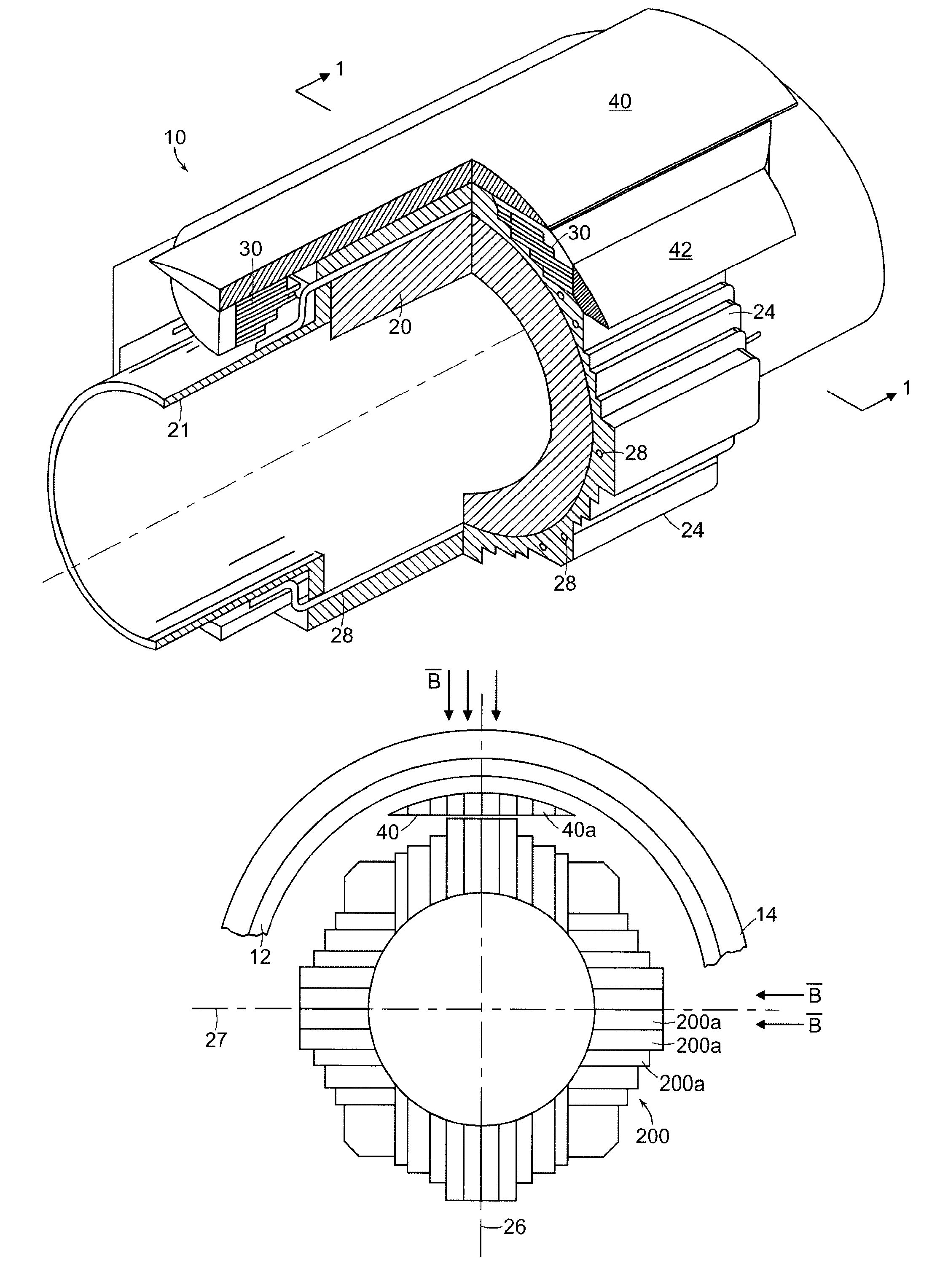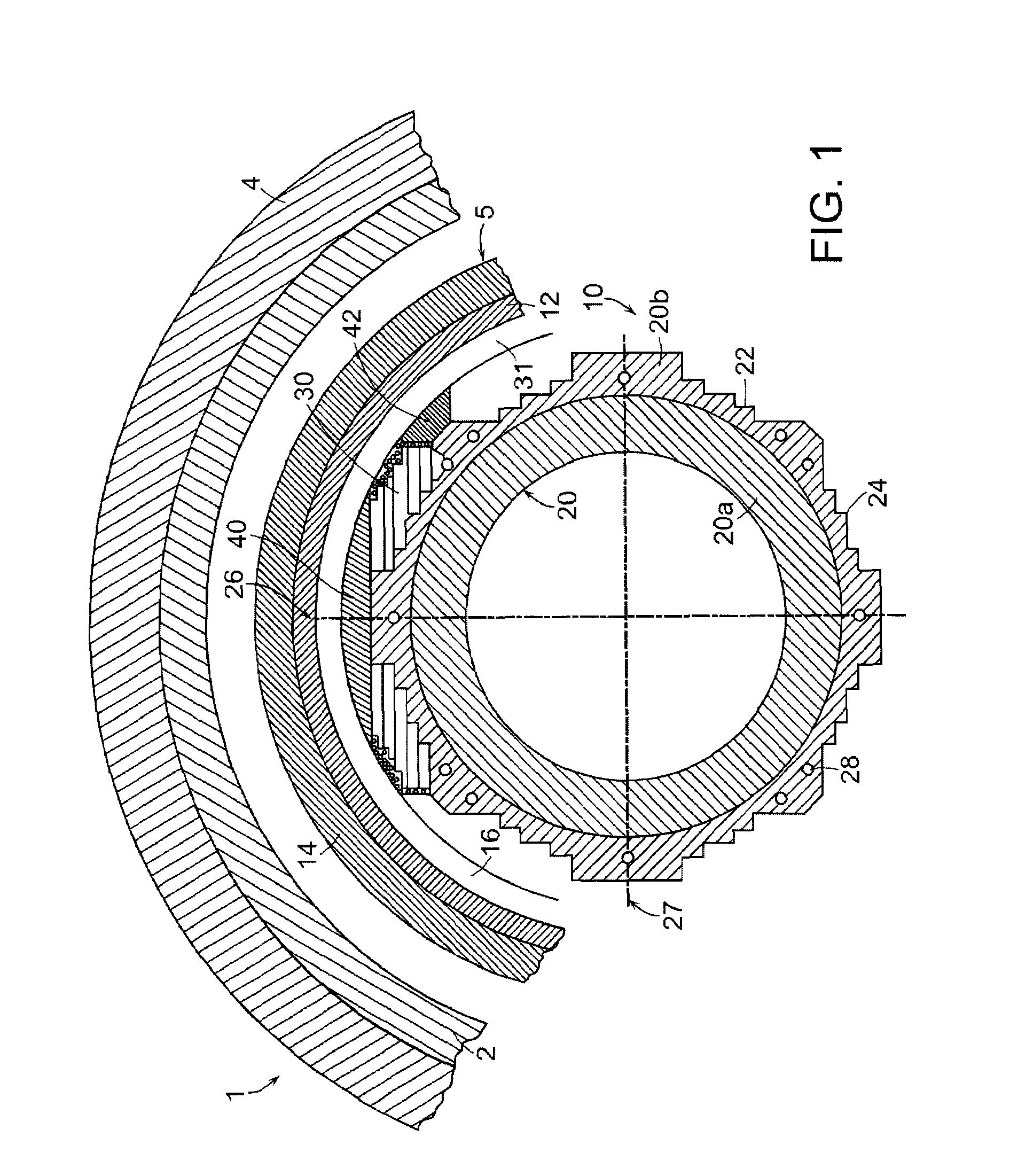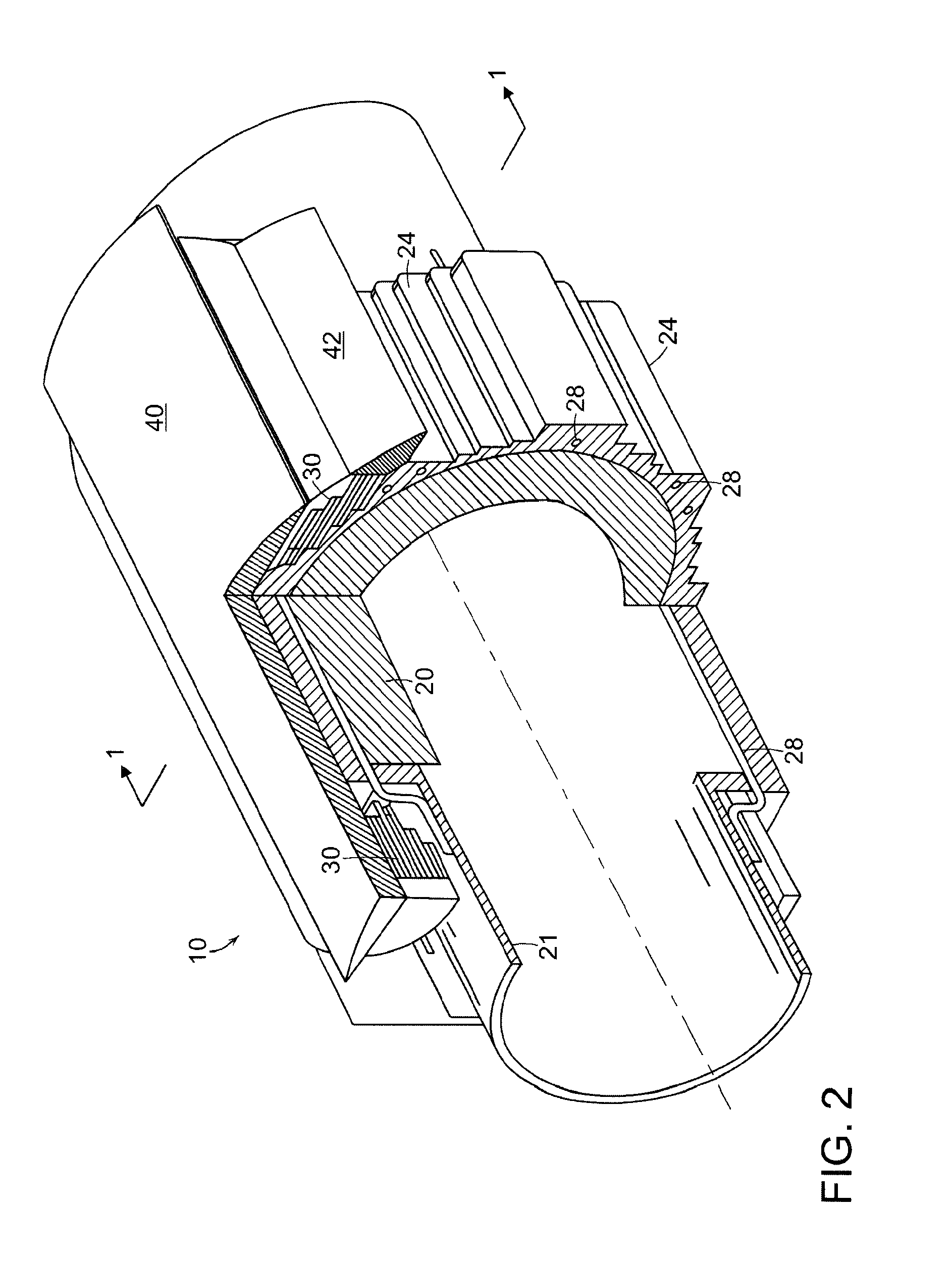Superconducting electric motor
a superconducting electric motor and superconducting technology, applied in the direction of synchronous motors, magnetic circuit rotating parts, magnetic circuit shape/form/construction, etc., can solve the problems of rotor torque, significant increase in the field magnetomotive force generated by the windings, and increase the flux and power density of the machines
- Summary
- Abstract
- Description
- Claims
- Application Information
AI Technical Summary
Benefits of technology
Problems solved by technology
Method used
Image
Examples
Embodiment Construction
[0028]Referring to FIG. 1, a superconducting synchronous motor 1 includes a rotor assembly 5 having a four-pole topology surrounded by a cryostat 12 and an outer electromagnetic shield 14, both of which are radially spaced from a cold rotor section 10 of assembly 5 by a vacuum layer 16. Electromagnetic shield 14 is, in turn, surrounded by a three-phase stator winding 2 and a laminated flux shield 4, here formed of iron. In other embodiments, iron flux shield 4 could be replaced with a solid metallic shield made of a non-magnetic material (e.g., copper or aluminum). Electromagnetic shield 14 is fabricated from a preferably non-magnetic material (e.g., copper, aluminum, steel, etc.). Rotor cold section 10 also includes a cold support member 20 fabricated from a high-strength and ductile material (e.g., aluminum). As will be discussed in greater detail below, aside from their typical functions, cryostat 12, electromagnetic shield 14, and cold support member 20, in aggregate, serve an a...
PUM
 Login to View More
Login to View More Abstract
Description
Claims
Application Information
 Login to View More
Login to View More - R&D
- Intellectual Property
- Life Sciences
- Materials
- Tech Scout
- Unparalleled Data Quality
- Higher Quality Content
- 60% Fewer Hallucinations
Browse by: Latest US Patents, China's latest patents, Technical Efficacy Thesaurus, Application Domain, Technology Topic, Popular Technical Reports.
© 2025 PatSnap. All rights reserved.Legal|Privacy policy|Modern Slavery Act Transparency Statement|Sitemap|About US| Contact US: help@patsnap.com



